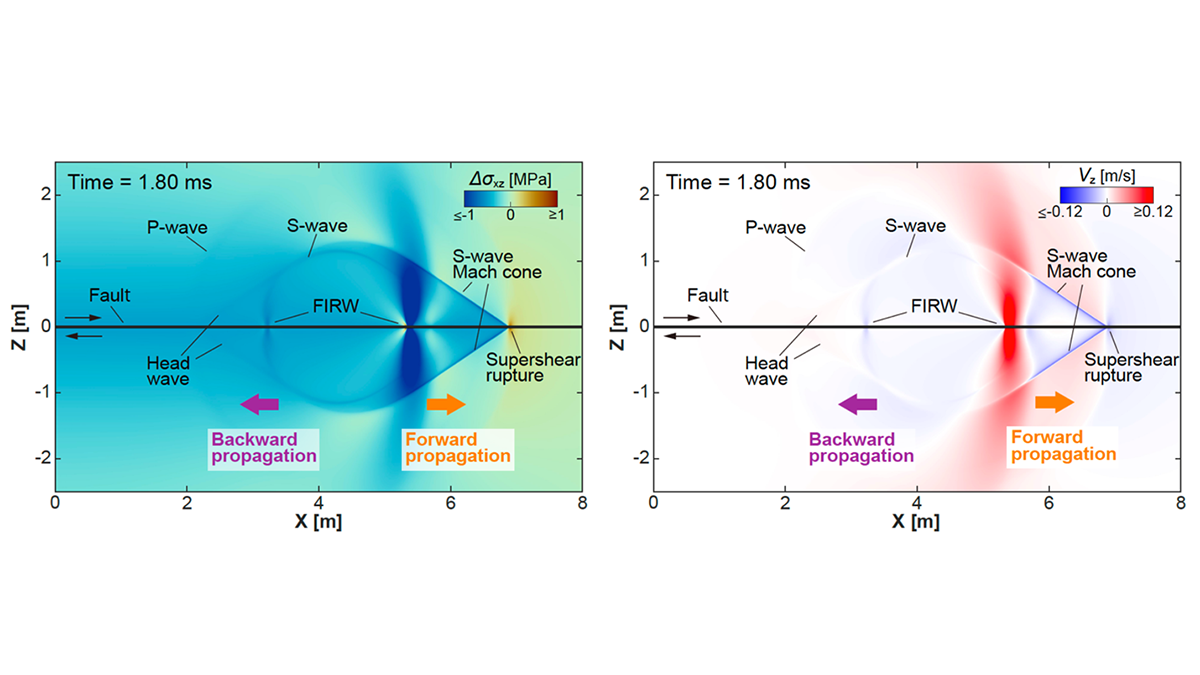Editors’ Highlights are summaries of recent papers by AGU’s journal editors.
Source: Journal of Geophysical Research: Solid Earth
Earthquake ruptures typically propagate unilaterally or bilaterally from their hypocenters. However, in some cases rupture takes a backward turn after propagating certain distances along the forward path, a phenomenon called back-propagating rupture (BPR).
Ding et al. [2024] present a comprehensive study on the source mechanisms of BPR through the integration of theoretical analysis, numerical simulation and laboratory experiments, with further discussion of BPR during the 2023 Mw 7.8 Türkiye earthquake. The authors demonstrate that BPR is an intrinsic feature of the dynamic rupture process but the wavefront interference behind the primary rupture front can mask BPR signals and explain the lack of confirmation from field observations. BPR signatures can be excited and/or enhanced by stress perturbations from, for example, the free surface reflection and rupture propagation across complex fault geometries.
As near-field seismic monitoring becomes more and more prevalent, BPR observations are expected to increase with important implications for elevated seismic hazard. This study makes a timely and important contribution to our understanding of this peculiar phenomenon in seismology.
Citation: Ding, X., Xu, S., Fukuyama, E., & Yamashita, F. (2024). Back-propagating rupture: Nature, excitation, and implications. Journal of Geophysical Research: Solid Earth, 129, e2024JB029629. https://doi.org/10.1029/2024JB029629
—Yajing Liu, Associate Editor, JGR: Solid Earth

